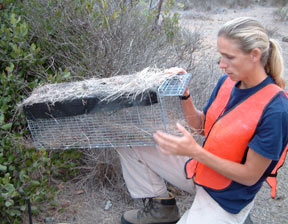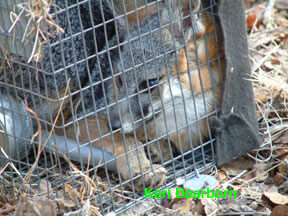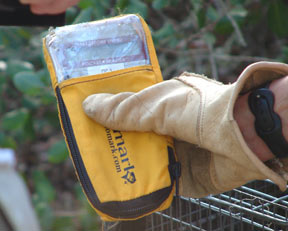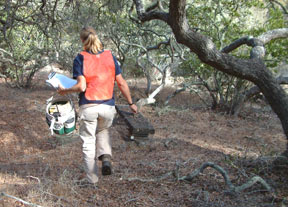Good News for Island Foxes
The numbers are gradually coming in from the biologists on the six Channel Islands that are home to the island fox. On the four islands where island foxes are endangered, San Miguel, Santa Rosa, Santa Cruz, and Santa Catalina, the populations continue to increase.
Each autumn, island foxes are counted by trapping them in specially designed containment traps. This allows biologists to determine the number of island foxes on each island, check their health, give them vaccinations for distemper and rabies, and fit radio tracking collars.
For more on Health Checks on Catalina Foxes.
Last year the number of island foxes physically counted on Santa Catalina Island was 365. This year over 500 have been individually counted!
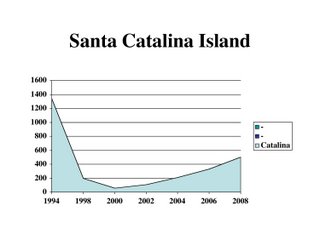
Endangered island fox populations are recovering successfully on all four islands, but we still have a long way to go to reach the population numbers before disease struck Santa Catalina Island and ecosystem imbalance resulted in golden eagles hunting island foxes on the northern islands. Why are island foxes endangered?
Island fox recovery has been possible because of broad reaching conservation efforts on their behalf.
Donations To Friends of the Island Fox Help:
Stay Linked In. As soon as the final population numbers are available, we will post them here on the Friends of the Island Fox website.
For detailed information on each island fox population as well as research summaries, video and podcasts - Click on the Library button in the directory bar.
Each autumn, island foxes are counted by trapping them in specially designed containment traps. This allows biologists to determine the number of island foxes on each island, check their health, give them vaccinations for distemper and rabies, and fit radio tracking collars.
For more on Health Checks on Catalina Foxes.
Last year the number of island foxes physically counted on Santa Catalina Island was 365. This year over 500 have been individually counted!

Endangered island fox populations are recovering successfully on all four islands, but we still have a long way to go to reach the population numbers before disease struck Santa Catalina Island and ecosystem imbalance resulted in golden eagles hunting island foxes on the northern islands. Why are island foxes endangered?
Island fox recovery has been possible because of broad reaching conservation efforts on their behalf.
You can help !
Donations To Friends of the Island Fox Help:
- purchase radio collars to monitor wild island foxes. Learn More
- supply vaccinations against disease transmitted from domestic dogs and species transported onto the islands. Learn More
- fund necropsies to study the cause of death in island foxes. Learn More
- support education programs to teach school children and community groups about this local endangered species and the Channel Island Ecosystem. Learn More
Stay Linked In. As soon as the final population numbers are available, we will post them here on the Friends of the Island Fox website.
For detailed information on each island fox population as well as research summaries, video and podcasts - Click on the Library button in the directory bar.
Labels: Channel Island fox, fox radio collars, Friends of Island Fox, island fox population, Santa Catalina island fox

